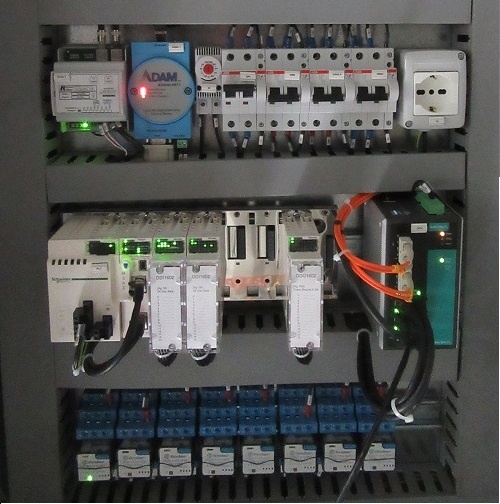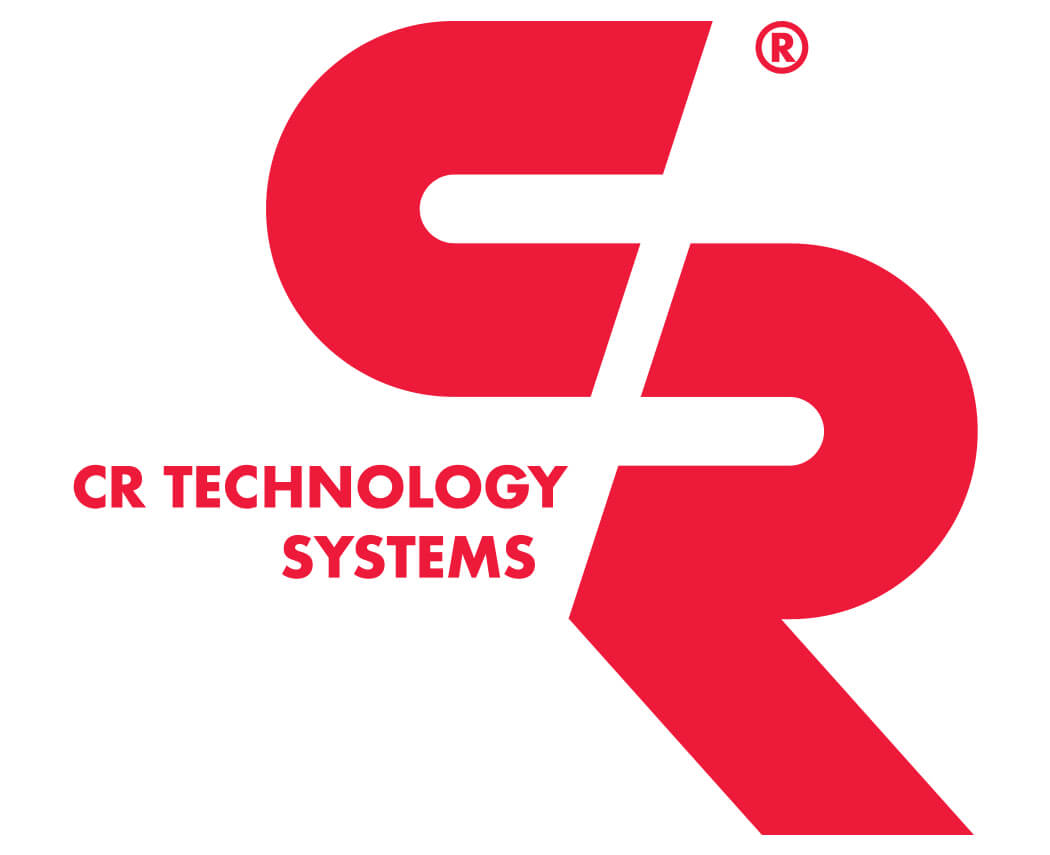The main supervision and control instruments of an industrial plant are: PLC (Programmable Logic Controller), inverter and SCADA system.
C.R. Technology Systems focuses on the design of supervision and control systems for industrial plants, providing technological solutions for electrical generation and distribution systems.
Below a description of some supervision and control devices for industrial processes, with a focus on photovoltaic systems.
PLC
What is a PLC?
A PLC (Programmable Logic Controller) is a programmable electronic device, used in the industrial sector to automate various electromechanical processes.
It allows to interpret and execute instructions stored therein, interacting with a control circuit through input and output devices.
Its function is to solve problems, such as the high energy consumption and the complexity of the wiring, due to the use of electromechanical relays to control the production processes.
How does it work?
The PLC receives information from the connected input instruments and sensors, it processes the gathered data and activates the required outputs, according to its pre-programmed parameters.
Based on input and output, a PLC can easily monitor and record the processed data, such as ambient temperature, plant productivity, generation of alarms in the event of a failure, automatic start and stop processes. PLCs are powerful, flexible, and adaptable manufacturing process control solutions for most applications.
PLC hardware components
- CPU o Microprocessor
- ROM (non-volatile) /RAM (volatile) memories
- I/O modules (in/out)
- Communication interfaces:
- Field bus: a digital communication channel between the PLC and field-type devices intelligent (IED). In the photovoltaic plants built by C.R. Technology Systems the smart devices used are, for example:
a) electrical protections of the MV switchgear
b) pyranometer
c) weather station
d) inverter
e) measurement and regulation devices
- Interface to the supervision system, which allows the exchange of data and information between the PLC and the plant supervision system.
- Field bus: a digital communication channel between the PLC and field-type devices intelligent (IED). In the photovoltaic plants built by C.R. Technology Systems the smart devices used are, for example:
- Power supply
- Programming device
PLC advantages and characteristics
Compared with the electromechanical and electronic circuits in wiring logic, the advantages of PLC are the following:
- Flexibility: the possibility to adjust a system considering the new process requirements, without revolutionizing its physical configuration (hardware), but only acting on the program (software), designed for its exclusive operation
- Reliability: the PLC involves electronic components that do not require special maintenance, it has self-diagnostic functions and it can interact with management computers capable to monitor their activity
- Versatility: the PLC easily adapts to any circuit solution, as its operation depends exclusively on the software set in it
- Recycling: the PLC can be reused over and over for the same application or for new systems
- Costs: over time the PLC has reached ever lower prices and dimensions, which have made it an extremely advantageous solution compared to common wired logic circuits
INVERTER
The inverter is an instrument used to convert a direct current (DC) into an alternative current (AC), and to vary frequency and amplitude parameters of the latter.
A photovoltaic plant can host one or more inverters, depending on the size. This allows to transfer the energy generated by the low-voltage (LV) sections, through one or more MV/LV transformers, and collect it in a medium-voltage (MV) unit. From the medium-voltage unit, the energy is transmitted into the electrical grid (MV grid).
In the event of plants with energy injected into the high-voltage (HV) network, a MV/HV step-up transformer is present in the plant.
SCADA System
The SCADA System, acronym for Supervision, Control and Data Acquisition, consists of software applications and hardware devices that, when properly integrated with each other, allow the user to have a product to control the industrial process in a smart way.
SCADA system functions:
- Control of the plant or process at local level, i.e. through one or more operator stations equipped with the HMI (Human Machinery Interface) application, located near the process
- Control of the plant or process from a remote center, i.e. through one or more operator stations equipped with an HMI application, located remotely. Note that each station in connected to a properly configured PC
- Monitoring, collection and processing of plant data in real time
- Direct interaction with the devices placed in the field, such as eg. sensors, switches, motors, transformers through the HMI application
- Recording of system events and plant alarms in log files, which can be consulted by the operator through the HMI application
- Creation of report files relating to plant data
- Periodic monitoring of the progress of the controlled electrical and non-electrical quantities
SCADA system advantages
SCADA systems are crucial for industrial organizations because they permit to maintain high operational efficiency, elaborate plant data in an orderly manner, to permit making the most appropriate decisions and quickly identify plant and system problems, allowing to minimize downtime.
SCADA system characteristics
In C.R. Technology Systems photovoltaic plants, the SCADA systems comply with the above description and have the following characteristics.
The HMI interface allows to efficiently supervise the plant, thanks to the easy use for the operator, who can work on the following graphic pages present on the interface:
- Detailed pages of the plant inverters, with the values of the electrical quantities on the AC side and DC side of the plant, alert of any alarms, inverter performance ratio values, instantaneous power, daily/total inverter energy , inverter diagnostic information, values of the total currents produced in real time by the connected photovoltaic modules
- Unifilar diagram of the electrical grid to be supervised with dynamic display of the states of the controlled parts, possibility of controlling them (e.g. switches, disconnectors, control auxiliaries), alert of any alarms
- Detailed pages of photovoltaic (PV) module strings, with alert of any alarms, values of the currents produced in real time by the various channels of the connected photovoltaic modules, string diagnostic information
- Detailed pages of PLC, with alert of any alarms, description and activation status of each PLC input/output channel, PLC diagnostic information
- Protection relay page, with alert of any alarms, description and activation status of each protection relay function, relay diagnostic information
- Measuring instrument page, value of electrical monitored measures, instrument diagnostic information
- Trend page, to visualize and compare the monitored measures in the form of linear graphs
- Report page, to consult in numerical format and through diagrams / graphs with the trend of the quantities over time, the values of daily energy produced in relation to solar irradiation, daily performance ratio, periodic energies (e.g. monthly, annual …), current string, other quantities acquired by the SCADA system
- Page area always present on the operator’s monitor with the main data, such as, measuring values of ambient parameters, inverter/system performance ratio, daily and total energy, indication of the presence of any classified summary alarms
- Power Plant Controller (PPC) page, to consult set point values of the active power and the power factor of the system, which allows the operator with the necessary operating rights to be able to change these settings. The functionality of the PPC is performed by the SCADA, which interfaces with dedicated mathematical algorithms configured in the PLC program, that interact with the regulation parameters of the inverters. In this way, in addition to ensuring optimal plant performance, it is possible to monitor and control the production of electricity in accordance with the distribution grid requirements.
For further information we invite you to read our articles on automation, communication and regulation, measuring, monitoring and remote-control instruments.

